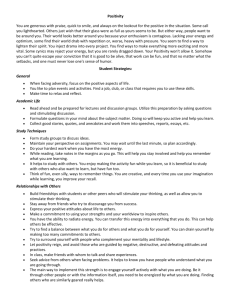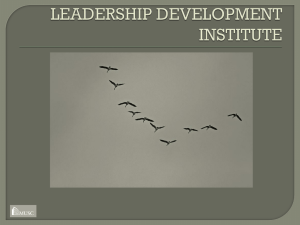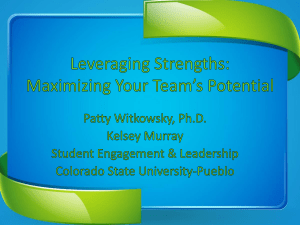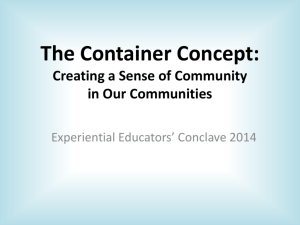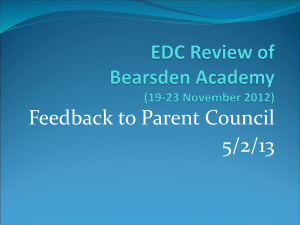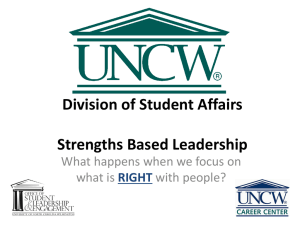Strengths Based Leadership Great Leaders, Teams and Why
advertisement
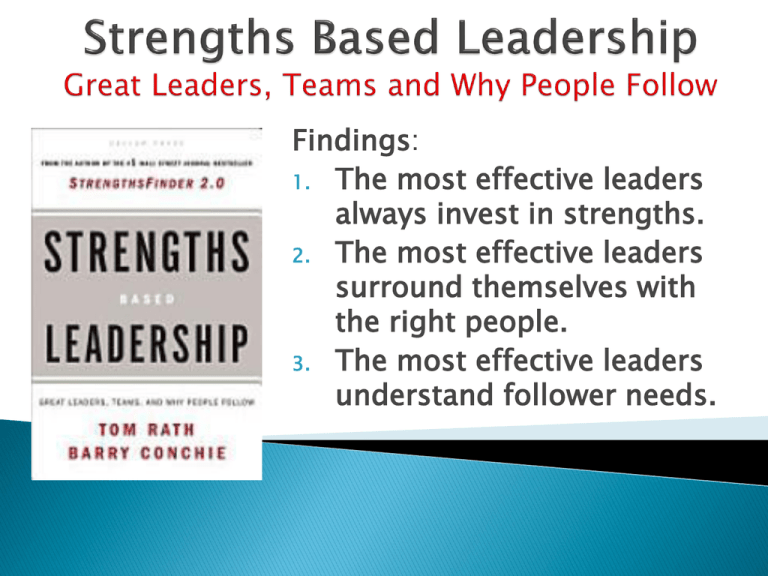
Findings: 1. The most effective leaders always invest in strengths. 2. The most effective leaders surround themselves with the right people. 3. The most effective leaders understand follower needs. Executing! Influencing! Relationship Building! Strategic Thinking Achiever Arranger Belief Consistency Deliberative Discipline Focus Responsibility Restorative Activator Command Communication Competition Maximizer Self-Assurance Significance Woo Adaptability Developer Connectedness Empathy Harmony Includer Individualization Positivity Relator Analytical Context Futuristic Ideation Input Intellection Learner Strategic Page 4-10 What moves you to do things? What annoys you? What do you most need to complement your dominant domain? Draw an image reflecting how you feel others primarily view you based on your dominant domain. Your View Your You Your Assessor Buyer Your Lender Your Appraiser How did you feel when reading your report? Any surprises? What did you learn? What questions have been raised? Page 4-11 Finding the right people, getting them in the right seats, recognizing achievement, putting their talents to work.--Collins Organizations where leadership does NOT focus on strengths. 0% 20% 40% Organizations where leaders DO focus on strengths. 60% Gallup Consulting 80% Canada France Germany Japan India China US 0% 10% 20% Gallup 30% 40% 6 5 4 3 2 1 0 Engage Confidence Hope Low Leader Positivity Resiliance Optimism High Leader Positivity 4 3 2 1 0 Quality Quantity Low Leader Positivity Hi Leader Positivity *P = RB – b(i) + S X ∑E + H² *P=Positive Frame of Mind RB = Your “right” brain b(i) = Brain Influencers S = Strengths ∑E = Measure of happiness H = Hope Did you smile in your yearbook photo? Handwritten autobiographies Harker and Keltner of the from 180 Catholic nuns, composed when participants University of California-Berkeley were a mean age of 22 years, found that positive emotional expression in college yearbook were scored for emotional content and related to survival pictures correlates with the selfreported personality traits of during ages 75 to 95 affiliation, competence and low negative emotions across A strong inverse association was found betweeneven positive adulthood, whenemotional controlling content in these writings and risk offor mortality late life—a 2.5-fold physicalinattractiveness and difference between the lowest and highest quartiles. Positive social desirability. emotional content in early-life autobiographies was strongly associated with longevity 6 decades later (Danner et al., 2001). Trust- honesty, integrity, respect Compassion- caring friendship, love Stability-security, strength, support, peace Hope-direction, faith, guidance Page 4-14 Conflict doesn’t destroy strong teams. Prioritize what’s best for the organization, then move forward. Committed to personal lives as well as to work. Embrace diversity. Magnets for talent. Page 4-13 Relentless focus on strengths identification, education, guidance and development. Be Positive! Build balanced teams with complementary Strengths. Attend to the follower needs. Strength Based Leaders Radiate Possibility
